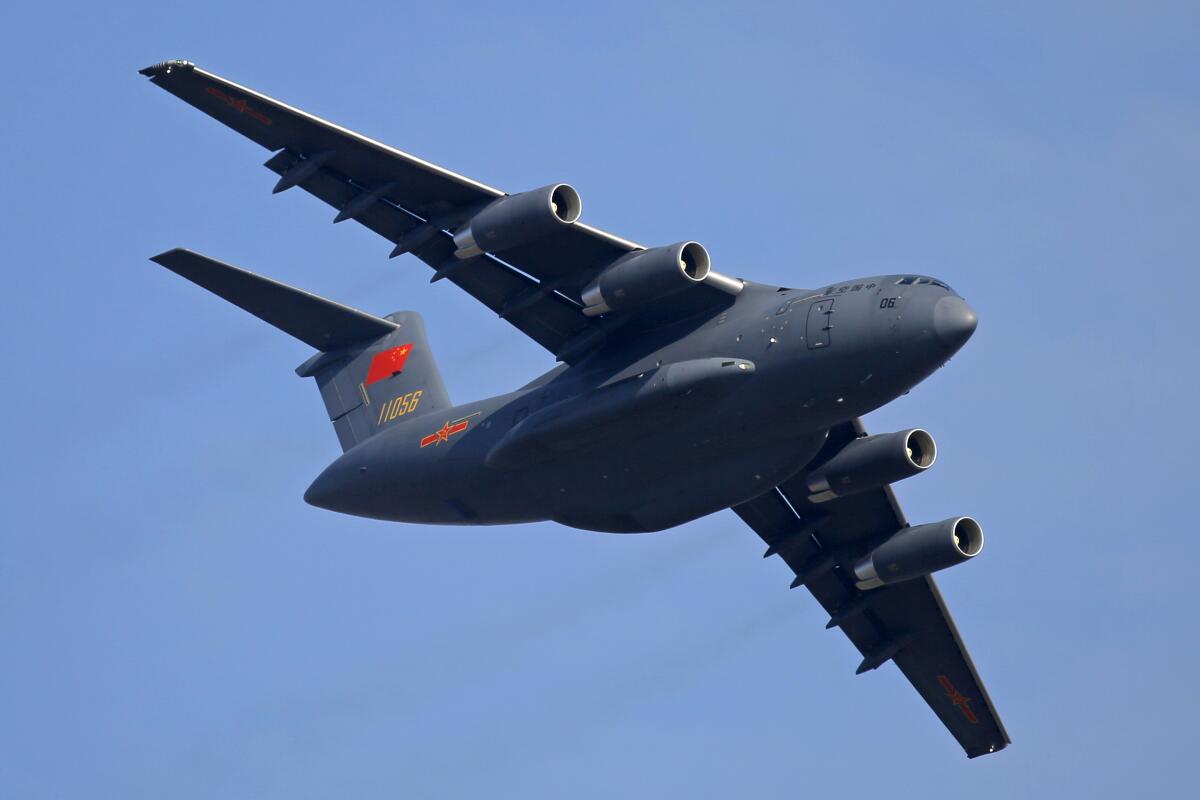China makes semisecret delivery of missiles to Serbia

Russian ally Serbia this weekend took the delivery of a sophisticated Chinese antiaircraft system in a veiled operation, amid Western concerns that an arms buildup in the Balkans at the same time as the war in Ukraine could threaten the fragile peace in the region.
Media and military experts said Sunday that six Chinese Air Force Y-20 transport planes landed at Belgrade’s civilian airport early Saturday, reportedly carrying HQ-22 surface-to-air missile systems for the Serbian military.
The Chinese cargo planes with military markings were pictured at Nikola Tesla Airport in the Serbian capital. The Serbian Ministry of Defense did not immediately respond to a request for comment.
The arms delivery over the territory of at least two NATO member states, Turkey and Bulgaria, was seen by experts as a demonstration of China’s growing global reach.
“The Y-20s’ appearance raised eyebrows because they flew en masse as opposed to a series of single-aircraft flights,” wrote the Warzone online magazine. “The Y-20’s presence in Europe in any numbers is also still a fairly new development.”
Serbian military analyst Aleksandar Radic said the Chinese “carried out their demonstration of force.”
Serbian President Aleksandar Vucic all but confirmed the delivery of the medium-range system that was agreed in 2019, saying Saturday that he will present “the newest pride” of the Serbian military on Tuesday or Wednesday. He had earlier complained that countries in the North Atlantic Treaty Organization, including most of Serbia’s neighbors, are refusing to allow the system’s delivery flights over their territories amid tensions over Russia’s aggression on Ukraine.
Although Serbia has voted in favor of United Nations resolutions that condemn the Russian attacks in Ukraine, it has refused to join international sanctions against its allies in Moscow or to criticize the apparent atrocities committed by Russian troops.
In 2020, U.S. officials warned Belgrade against the purchase of HQ-22 antiaircraft systems, whose export version is known as FK-3. They said that if Serbia wants to join the European Union and other Western alliances, it must align its military equipment with Western standards.
The Chinese missile system has been widely compared to the American Patriot and the Russian S-300 surface-to-air missile systems, although it has a shorter range than more advanced S-300s. Serbia will be the first operator of the Chinese missiles in Europe.
Serbia was at war with its neighbors in the 1990s. The country, which is formally seeking EU membership, has been boosting its armed forces with Russian and Chinese arms, including warplanes, battle tanks and other equipment.
In 2020, Serbia took delivery of Chengdu Pterodactyl-1 drones, known in China as Wing Loong. The combat drones are able to strike targets with bombs and missiles and can be used for reconnaissance tasks.
There are fears in the West that the arming of Serbia by Russia and China could encourage the Balkan country toward another war, especially against its former province of Kosovo, which proclaimed independence in 2008. Serbia, Russia and China don’t recognize Kosovo’s statehood, while most Western countries, including the U.S., do.
More to Read
Start your day right
Sign up for Essential California for news, features and recommendations from the L.A. Times and beyond in your inbox six days a week.
You may occasionally receive promotional content from the Los Angeles Times.






